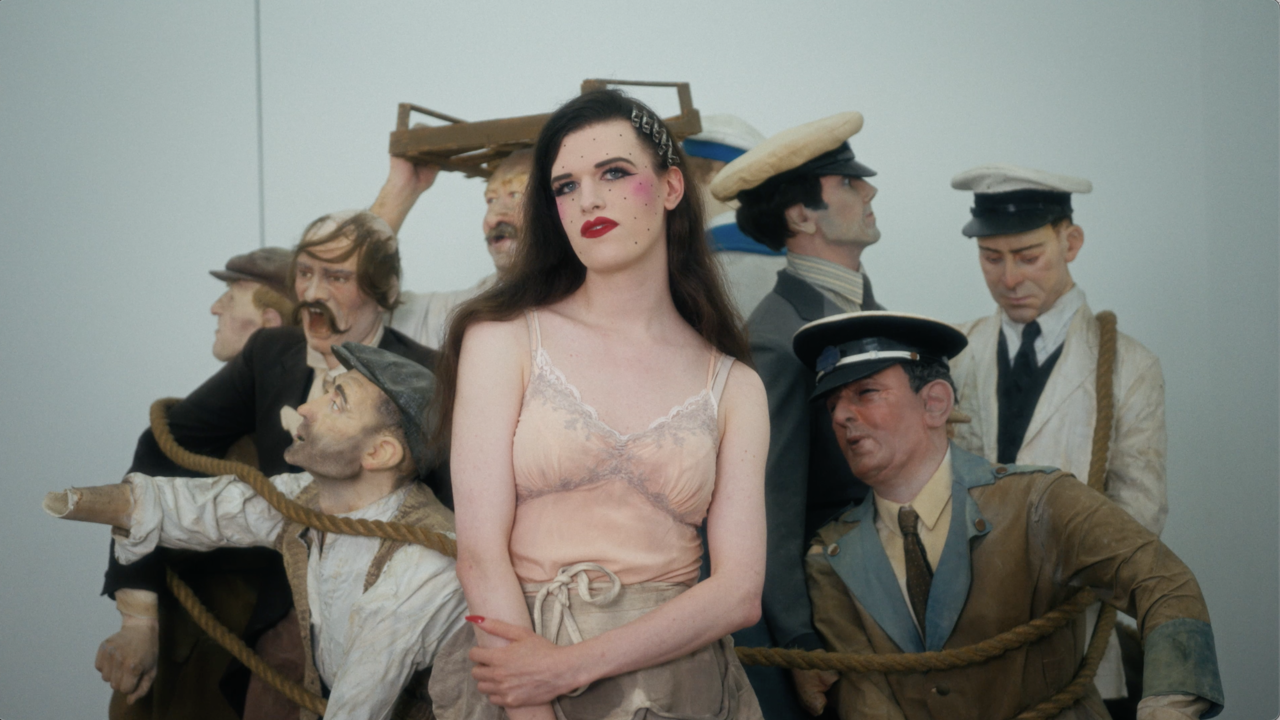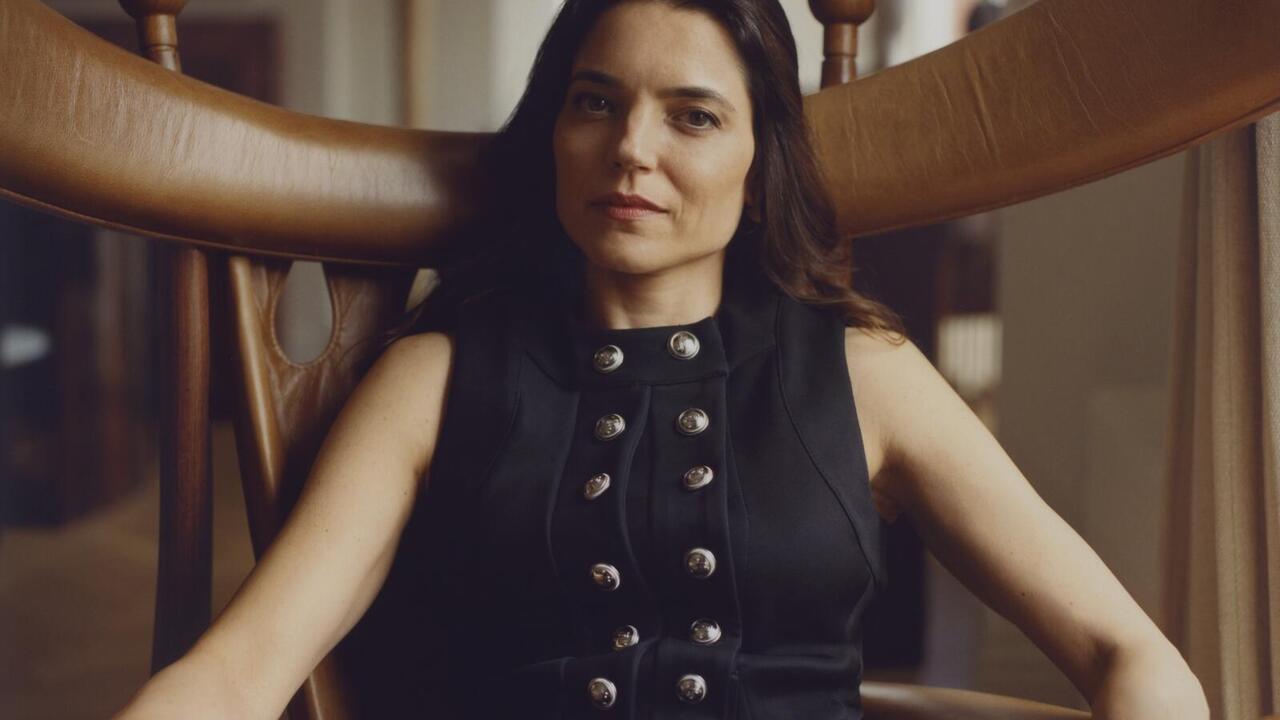Lawrence Abu Hamdan
Forensic listening and juridical speaking
Forensic listening and juridical speaking

BASIA LEWANDOWSKA CUMMINGS In the past, you’ve used the Bosch Ultro Discussion System, a tool for the recording and transmission of testimony, as a compositional tool for ‘activating’ your Aural Contract Audio Archive (2010–ongoing), acollection of audio tracks that document moments of juridical listening and speaking.
LAWRENCE ABU HAMDAN The Bosch Ultro Discussion System is the world’s foremost amplifier and transmitter of testimony. It’s installed in many courtrooms and political forums, including the International Criminal Court in The Hague, the un Human Rights Council in Geneva and the un Security Council in New York. Incorporating it into my work means that you not only hear the content of the archive, but also the forms in which testimony is consumed and produced. I use the Bosch microphones as part of a voice-activated audio archive system I devised. When you want to select a track from the archive, you speak into the microphones and say its title – ‘I Object Your Honour’, ‘Vocal Mug Shot’ or ‘Voice Coach for Lawyers’ – and it’ll play it back, or not, depending on whether it accepts or rejects your voice, or whether it is able to hear you. The system reveals the apparatus that produces the condition of listening. But it also pushes me to question how, within these forums – political, juridical, where speech acts – people are represented.
BLC Your work registers a powerful shift, from a focus on speech to how things are said. As you say, the system can ‘reject’ a voice, and the archive will stay closed.
LAH My audio documentary The Freedom of Speech Itself (2012) charts a history of the application of forensic speech analysis and voiceprints, examining the UK's use of voice analysis to determine the origins and authenticity of asylum-seekers’ accents. It demonstrates that there’s no change in the way you are demanded to navigate the legal system – you still have to testify, to stand up and speak, there’s no other form in which you can operate in that space – and yet the conditions of listening have changed. Now when you speak, you no longer know who, or what technology, is being used to interpret your voice. In my work, the voice is always doubled: the object voice and the subject voice are always embedded into a single testimony; they either corroborate or contradict one another’s account of events.
BLC You have mentioned that you’re inspired by Italo Calvino’s short story ‘A King Listens’ (1986), in which a palace transforms into a giant ear and becomes obsessed by aural surveillance. Have the UK and the US already transformed into paranoid listening devices? LAH I really like the passage in Jacques Attali’s Noise: The Political Economy of Music (1997) where he argues that surveillance is actually more like an emitter of noise than a receiver. It produces noise, and that noise is what mutes people, what shuts them up. So I wonder whether, instead of becoming ears, these states have become loudspeakers. Look at the NSA – what they are doing is absurd: they have all these phone calls that they are meticulously recording, but they can’t store them as audio because the data is too big, so they put them through ‘speech to text’ software and store them as text files. In my experience of using ‘speech to text’, the content usually becomes gibberish. So I imagine that they have these piles and piles of nonsense. In a way, that’s more articulate about the state than anything else: it’s not looking for anything specific and it’s gone past itself as a mode of surveillance. The question is no longer what they are listening for, but how they are listening – listening for listening’s sake.
BLC A bureaucratization of the voice? Similarly, your acoustic foam voiceprints comment on the need to make a physical proof of sound within the gallery. This raises the awkward relationship between sound, ‘sound art’ and exhibition.
LAH At the heart of the projects I made for Casco, Utrecht, and The Showroom, London, were two radio documentaries: one was The Freedom of Speech Itself, while The Whole Truth (2012) looks at the current application of voice analysis as a lie-detection method. I was working with a radio producer, and was thinking very formally in terms of craft and about how documentaries are made. I was paying attention to the small things that cumulatively constitute the conventions of the form; such as how long an un-translated voice can play before the translated speech fades up over it. I don’t know if I originally intended them to be made into ‘exhibitable’ forms, or whether it’s something that I adapted to because I am operating within the art context. Either way, I have found that translating the works into installations pushes them much further, often by adding extra layers; it becomes more performative, more expedient. The sculptural voiceprints really control the acoustic sphere: when you enter the gallery, you feel a sense of suction ofthe audible space, which in turn intensifies the acoustic quality ofthe voices within the documentary. These voiceprints themselves are physical translations of two vocal statements of the word ‘you’, created using cartographic methods to map the voices. Immediately, you are returned to thinking about this relationship between the controlof territory, and the control of the voice.
London-based artist Lawrence Abu Hamdan’s recent solo shows include: ‘The Freedom of Speech Itself’ (2012) at The Showroom, London, UK; ‘The Whole Truth’ (2012) at Casco, Utrecht, the Netherlands; and ‘Tape Echo’ (2013) at Beirut in Cairo, Egypt. His works have been part of the group exhibitions ‘Word.Sound.Power’ (2013), Tate Modern, London; the touring show ‘Meeting Points 7’ (2013–14); and ‘Schizophonia’ (2013–14), CAC La Synagogue de Delme, France. He is a PhD candidate at Goldsmiths College, London, at the Centre for Research Architecture.






















